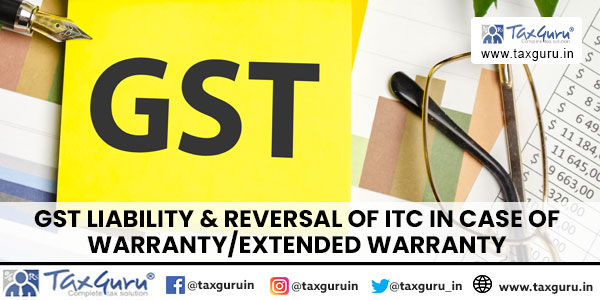 In 2015 CBDT issued Circular No. 21/2015 dated 10.12.2015 specifying monetary limits and other conditions for filing Appeals/SLPs by the Income Tax Department before Income Tax Appellate Tribunal, High Court & Supreme Court.
In 2015 CBDT issued Circular No. 21/2015 dated 10.12.2015 specifying monetary limits and other conditions for filing Appeals/SLPs by the Income Tax Department before Income Tax Appellate Tribunal, High Court & Supreme Court.
Now, as a measure to reduce the tax litigations CBDT has revised these monetary limits as below vide its Circular No.3/2018 dated 11.07.2018:-
| Filing of Appeals/SLPs/ Cross Objections in tax matters before
|
Present Monetary Limit (in Rs.) | Revised Monetary Limit (in Rs.) | Increase in Monetary Limit |
| Income Tax Appellate Tribunal (ITAT) | 10 Lakhs | 20 Lakhs | 2 Times |
| High Court | 20 Lakhs | 50 Lakhs | 2.5 Times |
| Supreme Court | 20 Lakhs | 1 Crore | 4 Times |
Decision on Merits
CBDT has clarified that the appeal should not be filed by the Deptt. merely because the tax effect exceeds the above prescribed monetary limit. Decision of filing of appeals should be taken on merits of individual cases.
Meaning of Tax Effect
Meaning of Tax Effect in specific circumstances would be as below:-
1. When income is taxed under General Provisions(other than Sec 115JB or Sec 115JC)
(a) When return is filed declaring a positive income then tax effect shall be calculated as below:-
| Tax on Disputed Additions | XXX |
| Surcharge (if applicable) | XXX |
| Cess | XXX |
| Tax Effect | XXX |
(b) Where the chargeability of interest is in dispute, amount of interest shall be the tax effect.
(c) Tax effect in case of Returned Loss:- Where the returned loss is reduced or assessed as income, the tax effect would be the notional tax on disputed additions.
(d) Tax effect in penalty cases:- In penalty cases the quantum of penalty deleted shall be the amount of tax effect.
2. When income is taxed under Section 115JB or Section 115JC
(e) In this case the tax effect shall be calculated on the disputed additions made on the income computed under general provisions of the Act plus disputed additions made us/ 115JB or 115JC (other than those already considered under general provisions). The Circular has prescribed following formula for computing Tax Effect in this case:-
“(A – B) + (C - D) where,
A = the total income assessed as per the provisions other than the provisions contained in section 115JB or section 115JC (herein called general provisions);
B = the total income that would have been chargeable had the total income assessed as per the general provisions been reduced by the amount of the disputed issues under general provisions;
C = the total income assessed as per the provisions contained in section 115JB or section 115JC;
D = the total income that would have been chargeable had the total income assessed as per the provisions contained in section 115JB or section 1I5JC was reduced by the amount of disputed issues under the said provisions:
However, where the amount of disputed issues is considered both under the provisions contained in section 115JB or section 115JC and under general provisions, such amount shall not be reduced from total income assessed while determining the amount under item D.”
Separate calculation of Tax Effect for each Assessment Year
Department will have to separately calculate the tax effect for each assessment year where a common tax issue is being taxed in various assessment years. Appeal/SLP shall be filed only for those assessment years, where the tax effect crosses the monetary limit. Appeals/SLPs/COs shall not be filed for the assessment year in which tax effect does not exceed the monetary limit. This may be illustrated as below:-
For filing an appeal before ITAT on a common issue the monetary limit for separate assessment years shall be calculated as below:-
| Assessment Year | 2xx1-02 | 2xx2-03 | 2xx3-04 | 2xx4-05 | 2xx5-06 |
| Monetary limit for appeal in ITAT | 20 Lac | 20 Lac | 20 Lac | 20 Lac | 20 Lac |
| Amount of Tax Effect (In Rs.) | 18 Lac | 21 Lac | 24 Lac | 13 Lac | 12 Lac |
| Whether appeal can be filed by the Deptt.
|
No | Yes | Yes | No | No |
Specific recording of fact by Pr. Commissioner of Income Tax/Commissioner of Income Tax for non-filing of appeal
The Circular has put Pr. Commissioner of Income Tax/Commissioner Of Income Tax under obligation to specifically record the following fact for non-filing of appeal by the Department:-
“Even though the decision is not acceptable, appeal is not being filed only on the consideration that the tax effect is less than the monetary limit specified in this circular.”
A separate record shall be maintained of such cases where the appeal has not been filed by the department for producing the same as evidence in cases where the counsel of the assessee take a plea that deletion of similar addition has not been challenged by the department in the earlier assessment year.
No presumption of Acceptance of Decision
Where the appeal is not filed due non-fulfillment of the criteria of monetary limit for any assessment year there will be no presumption that the Income-tax Department has accepted the decision on the disputed issues. Income-tax Department shall not be precluded from filing an appeal against the disputed issues in the case of the same assessee for any other assessment year, or in the case of any other assessee for the same or any other assessment year, if the tax effect exceeds the specified monetary limits.
Exceptions to Monetary Limit
The Circular has prescribed certain exceptions where the department may file appeal even where the monetary limit does not exceed. These exceptions are as below:-
(a) Where the Constitutional validity of the provision of an Act or Rule is under Challenge;
(b) Where Board’s Order, Notification, Instruction, or Circular has been held to be illegal or Ultra-vires;
(c) Where Revenue Audit Objection in the case has been accepted by the Department; or
(d) Where additions relates to undisclosed foreign assets/bank accounts.
Further this Circular will not be applicable in cases where the tax effect is not quantifiable or not involved such as the cases of registration of trusts or institutions under Section 12A/12AA of the Income Tax Act, 1961.
Effect on Pending Appeals
As per Para 13 of the Circular, pending appeals below the specified limits may be withdrawn/not pressed.
Concluding Remarks
The aforesaid increase in monetary limit for filing of appeals by the Department will certainly reduce (a) pending matters before various appellate authorities (b) burden of cost of litigation and (c) the amount of contingent liabilities in the financial statements of the assesses.
(The author, Pardeep Kumar, is a Chartered Accountant from Rohtak, Haryana. He can be reached at pardeep.kumar2@escorts.co.in)

























